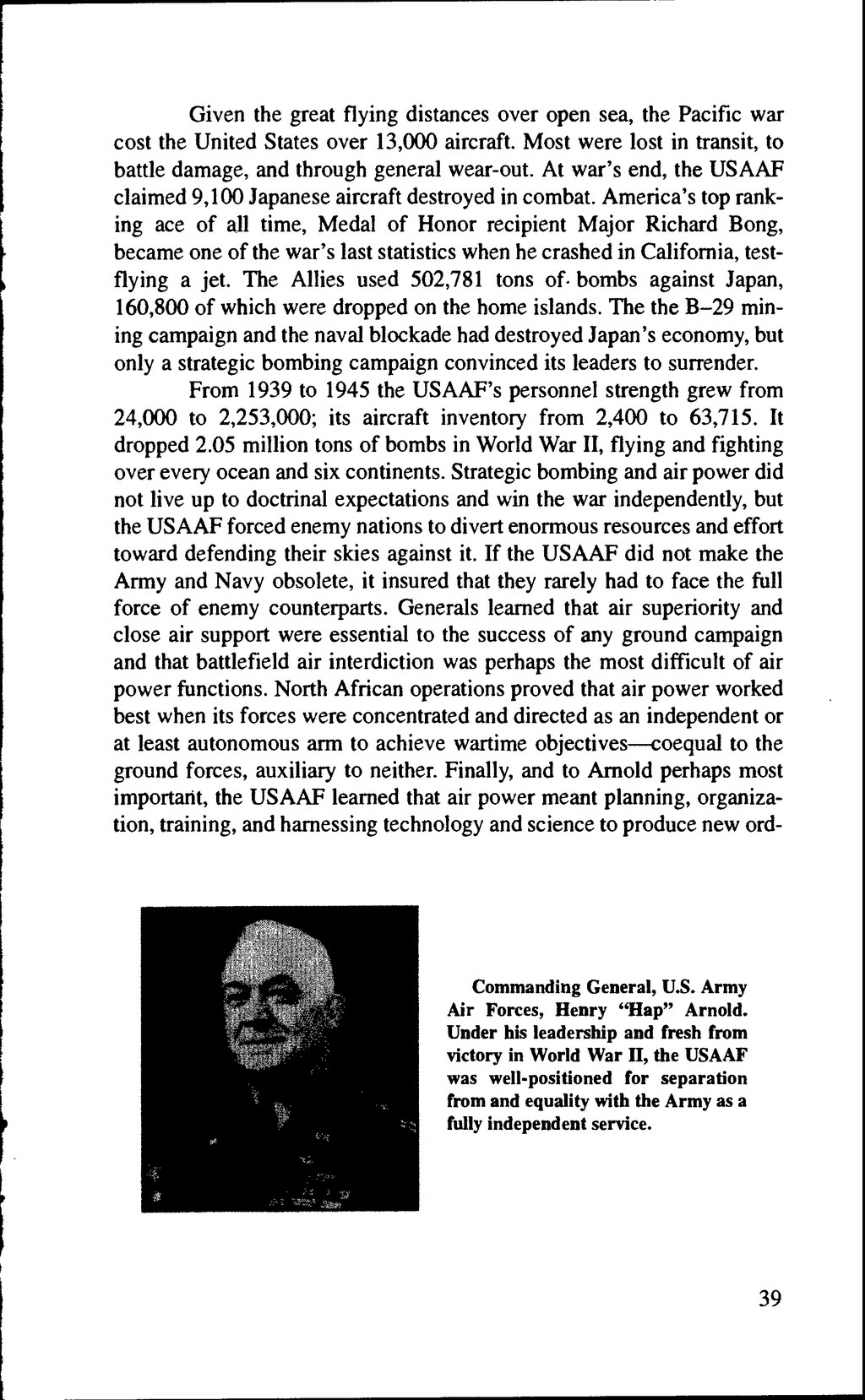Given the great flying distances over open sea, the Pacific war cost the United States over 13,000 aircraft. Most were lost in transit, to battle damage, and through general wear-out. At war's end, the USAAF claimed 9,100 Japanese aircraft destroyed in combat. America's top ranking ace of all time, Medal of Honor recipient Major Richard Bong, became one of the war's last statistics when he crashed in California, test-flying a jet. The Allies used 502,781 tons of. bombs against Japan, 160,800 of which were dropped on the home islands. The the B-29 mining campaign and the naval blockade had destroyed Japan's economy, but only a strategic bombing campaign convinced its leaders to surrender.
From 1939 to 1945 the USAAF's personnel strength grew from 24,000 to 2,253,000; its aircraft inventory from 2,400 to 63,715. It dropped 2.05 million tons of bombs in World War II, flying and fighting over every ocean and six continents. Strategic bombing and air power did not live up to doctrinal expectations and win the war independently, but the USAAF forced enemy nations to divert enormous resources and effort toward defending their skies against it. If the USAAF did not make the Army and Navy obsolete, it insured that they rarely had to face the full force of enemy counterparts. Generals learned that air superiority and close air support were essential to the success of any ground campaign and that battlefield air interdiction was perhaps the most difficult of air power functions. North African operations proved that air power worked best when its forces were concentrated and directed as an independent or at least autonomous arm to achieve wartime objectives―coequal to the ground forces, auxiliary to neither. Finally, and to Arnold perhaps most important, the USAAF learned that air power meant planning, organization, training, and harnessing technology and science to produce new ord-

